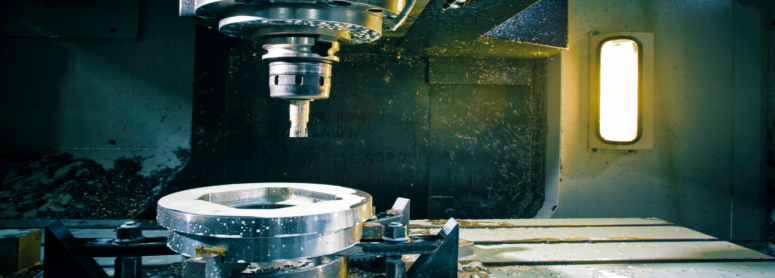What we do
Manufacturing

James Fisher Nuclear (JFN) manufactures, assembles and tests the equipment and systems supplied either in-house or with the support of an international chain of qualified suppliers.
The manufacturing strategy is selected for each individual project as part of the project delivery planning process to ensure that the cost and quality required by the customer is delivered. The make or buy decisions are informed by our highly experienced manufacturing teams and our supply chain specialists. Extensive use is made of carefully selected standard components which support the reliability and maintainability of the finished product. Where a specialist capability is required, off-the-shelf subsystems will be integrated to deliver a complete system.
CNC programming is used to define the material type, stock material size and tools to be used. There is no manual input of dimensional data to eliminate transcriptional errors and direct transmission of machine code to the machines. Machining cycle times are calculated automatically.
Automated tool setting routines are used to select the correct tool, load the tool turret and select the tool tip without the requirement for operator input.
- electronic
- probe
- tool offset data
- base stores results
The machining is followed without removing the component from the machine by an automated inspection process using electronic probes. The automated inspection process allows for compensation for tool wear and helps reduce component lead times.
Engineering requirements planning (ERP)
- Data for every part used is stored and linked by a bill of materials for each assembly
- Production resources required for the manufacture of parts and the routing of those parts to each resource is also entered
- Benefit of this system for one off jobs is that it provides the base data for the allocation of stock material, material ordering, material traceability, engineering change control, capacity planning and the reporting of shortage lists
- For repeat orders, data can be used to automatically generate material orders and works orders on individual bills of material, or though manufacturing requirements planning (MRP), if there are many of the same parts being used by a number of orders
- Significant savings in product management time result
Production planning
- When there are many orders for assemblies having some common parts, the MRP system enables works orders to be grouped so that all common parts can be put onto the same works orders and minimise CNC set up operations
- All works orders can be loaded onto the appropriate resources and the effect can be assessed using infinite and finite capacity planning
Machine shop
- Size approx 360m2
- Equipment for CNC milling and turning, manual milling and turning, drilling and welding
- Craneage – 2,000kg, 3.7m Under Hook, 500kg 2.5m Under Hook 3m Radius Work-handler
Assembly fitting shops
- Size/capacity – 300m2 limited to max assembly profile 4m2
- Craneage – 2,000kg, 3.7m under hook
- Additional mobile lifting equipment incl. 4t fork lift and 1t A-frame
Fabrication/planting shops
Size, bay height access dimensions and craneage for each shop. Welding procedures – Spec BSEN 287 BS15614 ASME 1X
- Facility – Malton
- Size/capacity – 10m2 dedicated, additional expansion available as required
- Craneage – 500kg, 2.5m under hook
JPress releases
- Energy Coast UTC Generation Challenge Day
- BBC World News ROV Feature
- IAEA Conference on Spent Fuel
- James Fisher Nuclear acquires High Technology Sources Ltd.
- James Fisher Nuclear to Rebrand
- JFN wins contract at the Hunterston A Site
- Major Contract award - BEPPS-DIF
- JFN Achieves Hat Trick at NDA Award
Most viewed pages
Stay in touch
- Contact us
- Vacancies
- YouTube
Must-read blogs
- Non Gamstop Casino
- Best Non Gamstop Casinos
- Gambling Sites Not On Gamstop
- UK Betting Sites Not On Gamstop
- Gambling Sites Not On Gamstop
- Betting Sites Not On Gamstop UK
- Non Gamstop Casino Sites UK
- Best Non Gamstop Casinos
- Non Gamstop Casinos
- Casinos Not On Gamstop
- Best Non Gamstop Casinos 2025
- Best Non Gamstop Casinos
- Casino Not On Gamstop
- Non Gamstop Casinos UK
- Online Betting Sites UK
- Non Gamstop Casino UK
- Gambling Sites Not On Gamstop
- UK Casino Not On Gamstop
- Non Gamstop Casino Sites UK
- Casino Sites Not On Gamstop
- UK Casino Sites Not On Gamstop
- Casino Sites UK Not On Gamstop
- Casinos Not On Gamstop

